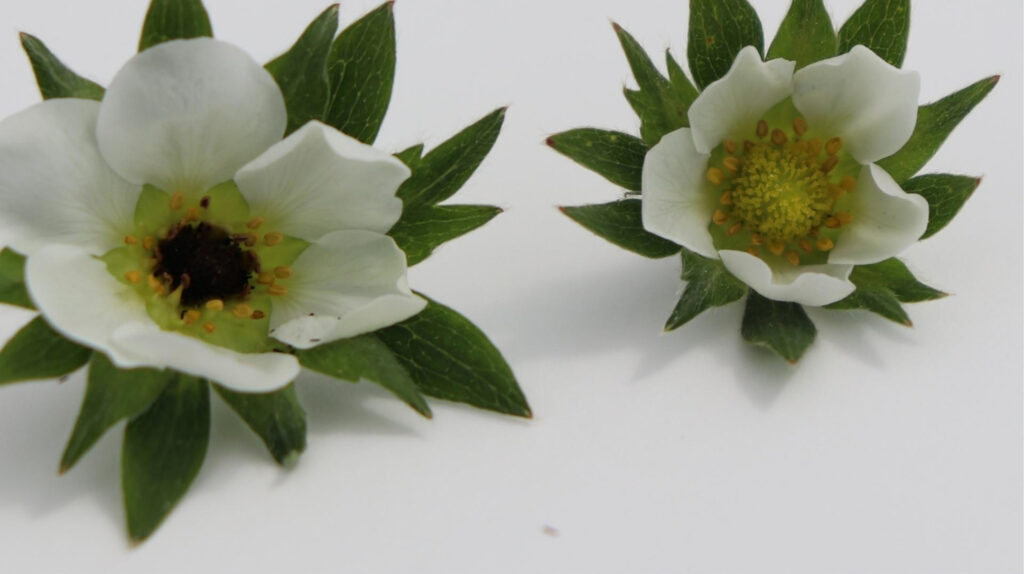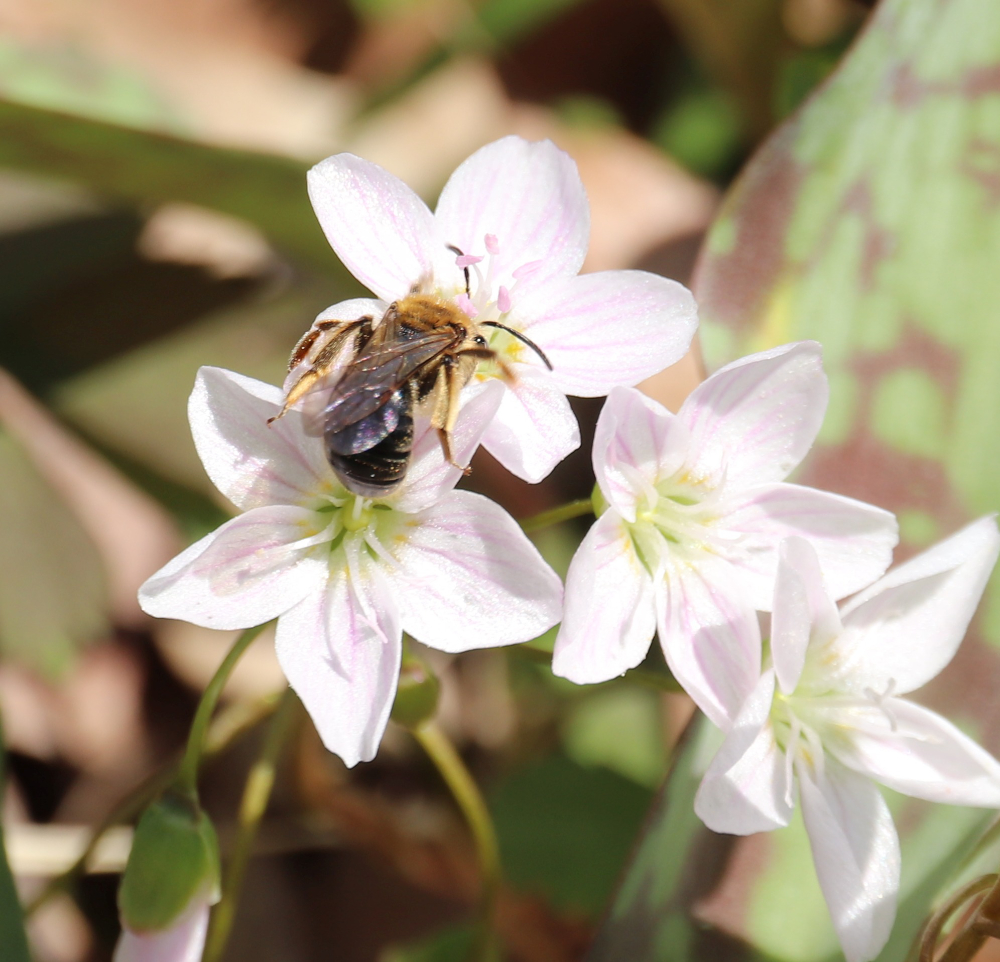
The Strawberry flower on the left was damaged by a late frost. It will not produce fruit. The flower on the right is undamaged.
How will climate change impact your garden in southwestern Ontario specifically? That’s a good question, and with a new report, we can extract some answers. The Ontario government released The Ontario Provincial Climate Change Impact Assessment in late August of 2023 on climate change. It’s a riveting read, but if you haven’t got time, here is the important information relevant to the home gardener:
Our growing season is getting longer, about three weeks longer by 2080, with high likelihood. From 1976-2005, our frost-free period in the London area was May 3 to October 8th. Based on the last ten years of weather data from the London Airport weather station monitored by Environment Canada, our average spring frost is May 2nd (so one day earlier), while the first fall frost has moved back by 13 days to October 21st! This presents opportunities for the vegetable gardener to expand the growing season in the fall.
While the average last spring frost date hasn’t changed, freezing temperatures in the spring will be increasingly unpredictable in the future, posing a significant risk to plants that flower and fruit. With increased heat earlier in the spring, plants will bud earlier. If a hard frost occurs once the plants have budded or started to flower, then the flowers can be damaged and no fruit will form. For instance, if the temperature drops to -4.4 ºC once apple tree buds have broke, then there will be a 90% fewer apples due to damaged flowers.

With warmer growing seasons, we can expect increased pest and disease pressure from old and new friends alike. This potato beetle’s life cycle occurs faster in warmer weather, increasing the population growth in your garden.
Air temperatures will become much warmer with very high likelihood. While we have 9 days above 30 ºC per year right now, we will likely have more than 60 days above 30 ºC by 2080. To put this in perspective, it could mean every other day is at least 30 ºC from June to September by 2080. The heat is the main driver to the climate risk in our area. Tree species that are at the southern limit of their range, for instance the tamarack or eastern white cedar, will likely move northwards. Diversity in our gardens will be critical to having a garden that has some species that thrive in our future environment.
The report was less certain about the change in precipitation for our area. There is no strong prediction about a change in the amount of precipitation, nor with long periods of drought. Warmer summers with the same amount of summer precipitation will likely mean periods of drier soil as more soil water evaporates in the heat. The report repeatedly emphasized that although the total precipitation in the growing season won’t change, the precipitation will come less frequently in events that bring greater rainfall amounts. This means our growing season will be punctuated by periods of dryness and periods of extreme wetness. As gardeners, we will need to adapt our practices to conserve moisture during dry periods and allow drainage during wetter periods. As the winters warm, we are predicted to have more precipitation fall as rain rather than snow (currently 40% is rain in winter). If the ground is frozen, drainage will be an issue.
The hardest part of our changing climate is the the uncertainty of what is to come. As gardeners all we can do is be the best stewards of the earth as we can by protecting the biodiversity around us.

Pollinators, like this miner bee, time their emergence with their host plant flowering. With changing weather patterns, the pollinators might not emerge at the correct time for optimum foraging.
We can start preparing our gardens for the changing climate this season. Check out these other articles on our website:


About The Author: Amy Turnbull
Scientist, researcher and professor at Fanshawe College. Avid grower of edibles in her home garden.
More posts by Amy Turnbull